Six ways to make a tiny garden work
From quarter acre to quarter-sized blocks, gardens are going small too. Here’s how to make a tiny patch look fabulous.
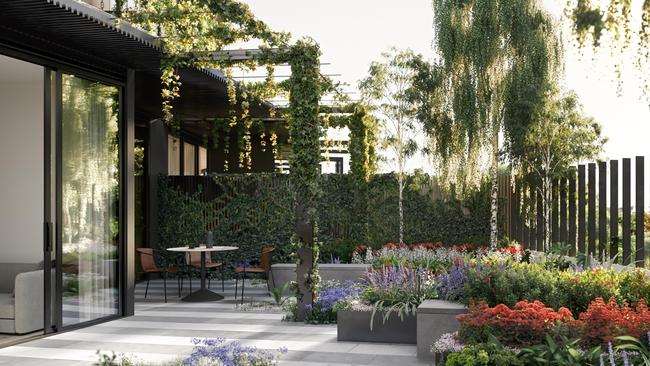
Home
Don't miss out on the headlines from Home. Followed categories will be added to My News.
In years gone by, a quarter acre block was often described as the great Australian dream. Today however, as a result of urban infill, the need to mitigate urban sprawl and a change of life priorities for many, these large properties have been replaced with smaller blocks, where houses often have a larger footprint on the allotment. The result is courtyard-sized, small patch gardens and while creating a smaller garden may seem easier than establishing a larger one, it requires just as much planning and designing to make sure that you get the most from the limited space. Here are six ways to make it work.
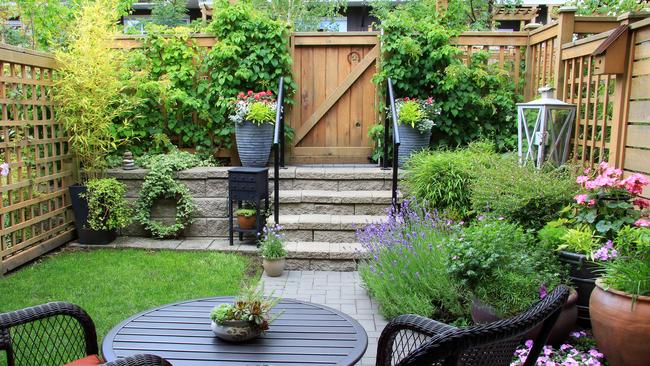
DESIGN THE SPACE
Factors to consider when creating a courtyard garden are the design, style and plant selection. The best way to approach designing a courtyard garden is to think of your garden as an extension of your home, an outside room let’s say, and then work out what you want to use this ‘room’ for. Is it a functional outdoor living space, a place for outdoor entertaining, a quiet retreat in which to escape and to read, or just a beautiful scene primarily admired from inside?
Once the criteria are established, you also need to consider if you want a dominant garden style.
Where space is limited, the style of both the courtyard and the house need to work in harmony. Decide whether your indoor style is classic formal, relaxed country or simple and modern, and then plan your garden to complement and continue this style.
Other considerations are whether you can plant into the ground or whether you can only grow plants in pots.
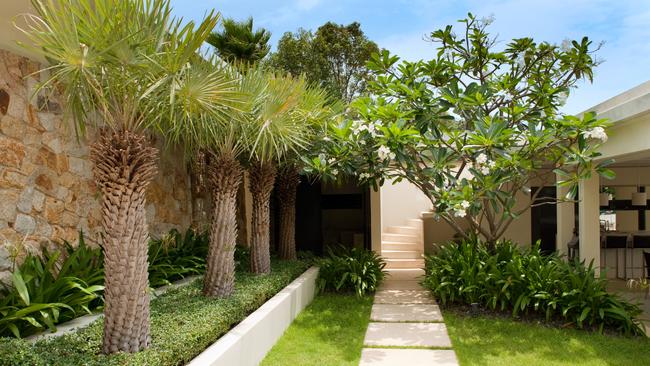
ADD STRUCTURE
Once you have thought through the style of your small patch, take a look at its existing structures, boundaries and surfaces, adding in focal points or features, and softening everything with plants. Features can range from garden furniture such as a seat or bench, statues, ornaments and containers, water features, lighting effects, as well as strategically placed feature plants.
When choosing the horizontal surfaces in your garden, look at all options from hard surfaces such as paving, stone or decking, to soft surfaces of grass, groundcovers, gravel and mulch. Paving large areas may seem like the easy option, however this can create reflected heat in harsh climates, making the space less liveable, glary and bright, and unfavourable for many plants. Including an appropriate tree for shade or vine covered pergola can help to mitigate this.
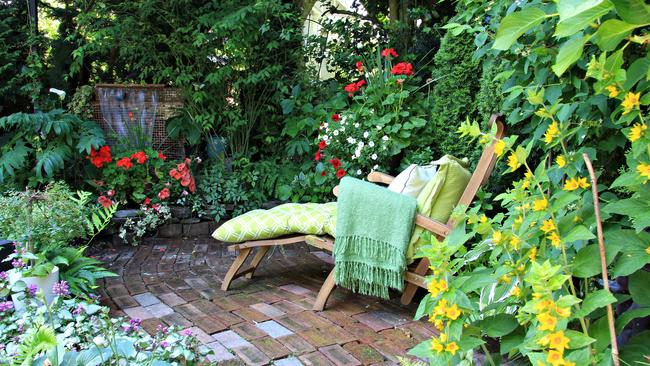
LAYER IT UP
Another clever way to change the feel of a small garden space is by layering. Planting or grouping plants in layers can create a feeling of depth and interest in even the smallest space, with plants scaling up from small shrubs at the front to the tallest at the back.
The last step in the development and design of a courtyard garden, and by no means the least important, is the plant selection. It is vital you choose ‘good value’ plants. These plants have a number of benefits and look attractive throughout the seasons. This can be achieved not only by their flowers, but also their attractive foliage, bark, form and structure.
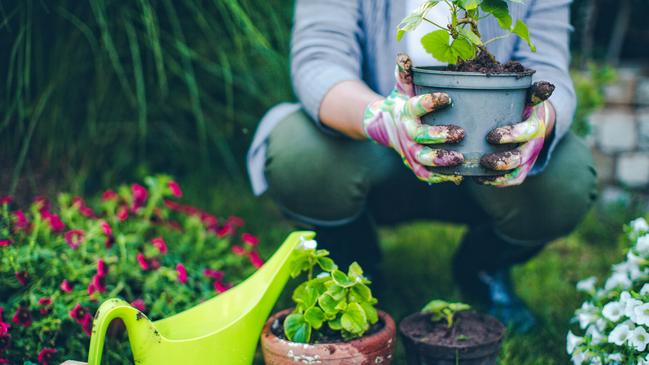
THE PRODUCTIVE PATCH
For larger plants, use a combination of good-value fruit trees, such as citrus which are productive and very ornamental with good looking evergreen foliage, fragrant white blooms and attractive fruits. Other fruiting trees and plants should be chosen based on their suitability for your climate and the local conditions within your small patch.
Add your favourite herbs, particularly perennial herbs, and vegie beds or planters for annual vegies and herbs. Don’t overlook adding edible flowers such as calendulas and alyssum as they not only look colourful, they attract garden guardians which can help you manage the pest insects.

THE FLOWER GARDEN
For larger plants, look at plants like crepe myrtles which can bloom for 60-100 days midsummer, add in shrubs for colour and interest such as hibiscus, duranta ‘geisha girl’ and Chinese lanterns, and even consider roses.
You could also choose to create a native flower garden using native plants which will have the added bonus of being highly attractive to birds. If looking for special plants in such a garden, consider standard grevilleas as focal points.

THE PERFUMED GARDEN
For those who want a pretty garden with flowering plants, you might start with a showy flowering tree such as a magnolia or frangipani, and add in shrubs such as gardenias, orange jessamine (Murraya) and daphne. Climbing Chinese star jasmine can work well on wall panels if trained well from the start.


